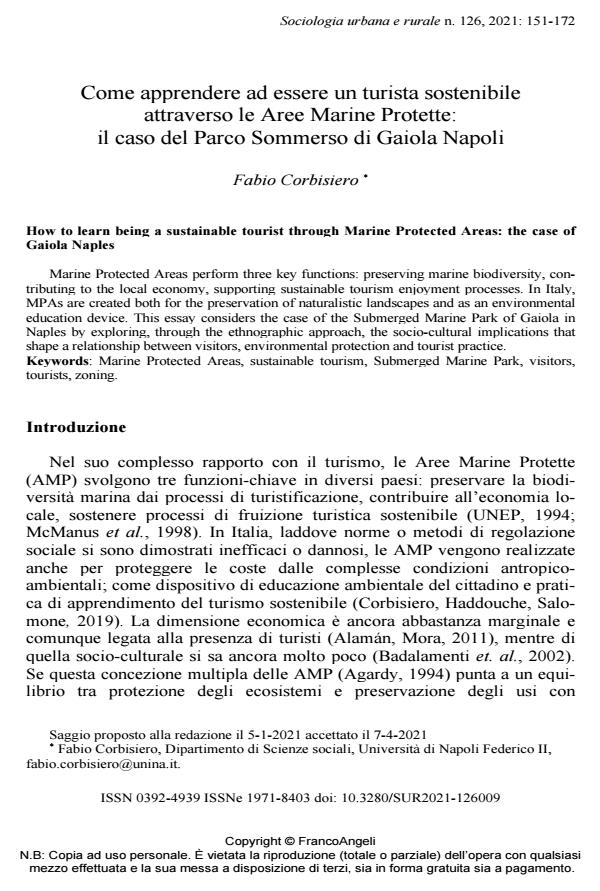How to learn being a sustainable tourist through Marine Protected Areas: the case of Gaiola Naples
Journal title SOCIOLOGIA URBANA E RURALE
Author/s Fabio Corbisiero
Publishing Year 2022 Issue 2021/126
Language Italian Pages 22 P. 151-172 File size 271 KB
DOI 10.3280/SUR2021-126009
DOI is like a bar code for intellectual property: to have more infomation
click here
Below, you can see the article first page
If you want to buy this article in PDF format, you can do it, following the instructions to buy download credits

FrancoAngeli is member of Publishers International Linking Association, Inc (PILA), a not-for-profit association which run the CrossRef service enabling links to and from online scholarly content.
Marine Protected Areas perform three key functions: preserving marine biodiversity, con-tributing to the local economy, supporting sustainable tourism enjoyment processes. In Italy, MPAs are created both for the preservation of naturalistic landscapes and as an environmental education device. This essay considers the case of the Submerged Marine Park of Gaiola in Naples by exploring, through the ethnographic approach, the socio-cultural implications that shape a relationship between visitors, environmental protection and tourist practice.
Keywords: Marine Protected Areas, sustainable tourism, Submerged Marine Park, visitors, tourists, zoning.
Fabio Corbisiero, Come apprendere ad essere un turista sostenibile attraverso le Aree Marine Protette: il caso del Parco Sommerso di Gaiola Napoli in "SOCIOLOGIA URBANA E RURALE" 126/2021, pp 151-172, DOI: 10.3280/SUR2021-126009